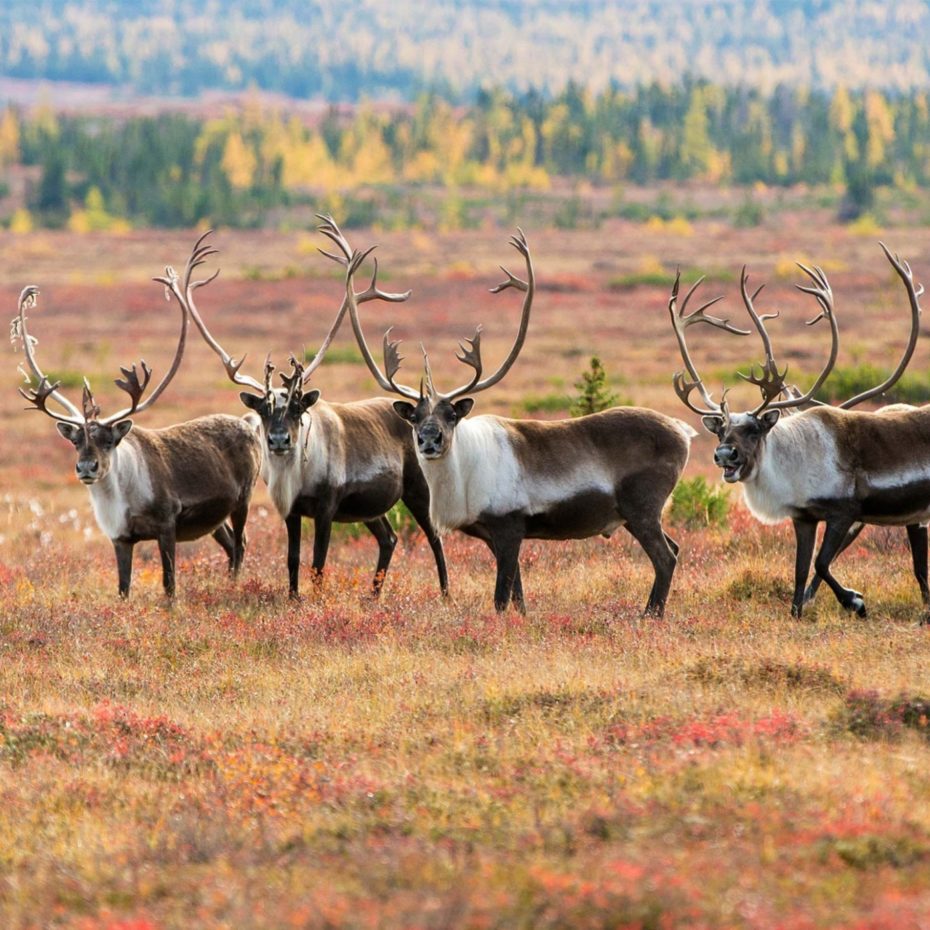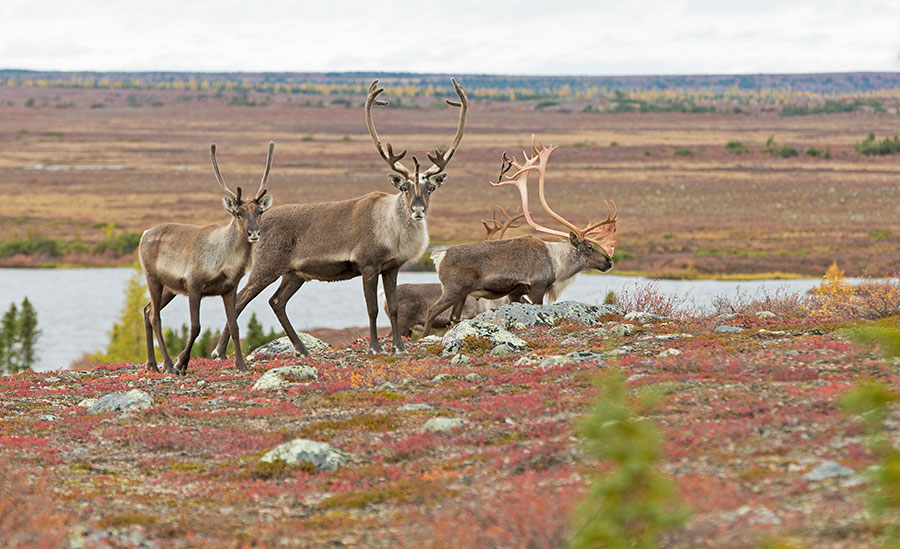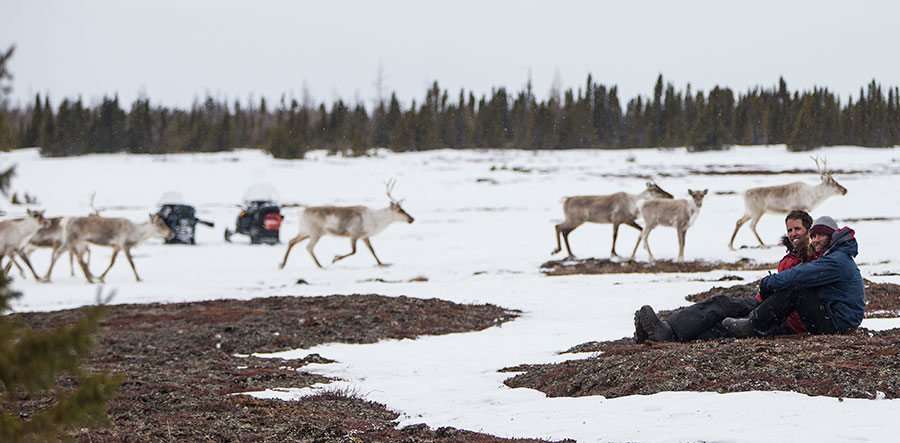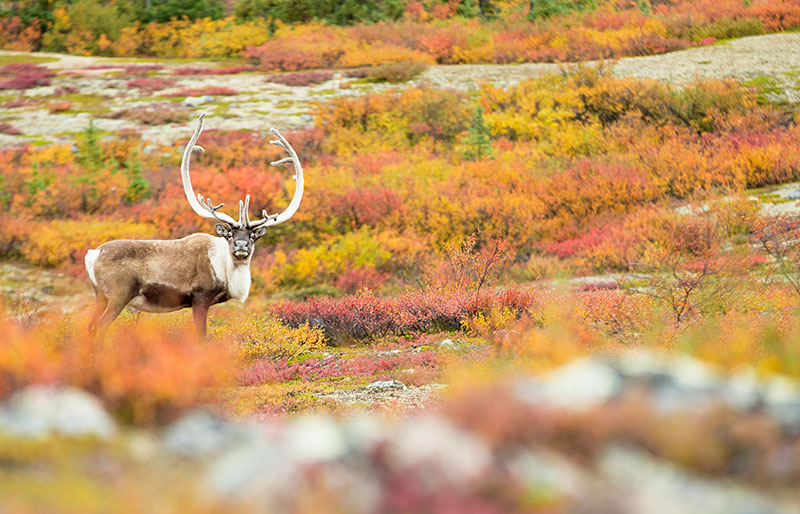CARIBOU FACTS
Arctic Haven

Arctic Haven
May 16, 2018 | Arctic Haven
Things you didn't know about caribou antlers!
Things you didn’t know about caribou antlers!
In the north, caribou are an iconic circumpolar species whose distribution ranges from the arctic and tundra to the boreal and mountains of Europe, Siberia and North America. Caribou are members of the cervidae family, a branch of ungulates, who grow antlers every year. The process of shedding and re-growing antlers year after year is a unique process. In just a matter of weeks, bull caribou can grow antlers which weigh up to 20 pounds and are over a meter in length!

A small group of bull caribou in the Autumn season (August/September) at Arctic Haven - notice the red antlers.
Caribou are the only species among the deer family which both males and females have antlers:
Within the Cervidae family, the female caribou is unique in that they are the only of their gender to carry antlers. While the antlers of female caribou are much smaller than their male counterparts, cows will carry their antlers throughout the winter season whereas the bulls will loose theirs by late fall after the rut. Pregnant caribou won’t shed their antlers until after they have given birth in the spring. It is thought that females keep their antlers to defend food which is critical during their pregnancy. There are exceptions where 3-5% of cows will never grow antlers at all.

Female caribou & their young migrating past two guests at Arctic Haven in April.
In the early stages of development, caribou antlers are covered in a soft fuzz known as velvet.
Initially, caribou antlers grow as a soft cartilage-like tissue filled with blood vessels and nerves which carry calcium and other nutrients necessary for antler development. As the season progresses, antlers become calcified and harden and eventually the vascular skin falls off. Bull caribou shed their velvet just before the rut and as a result will often have red stained antlers in mid-September. In order to supply enough calcium to allow for antler growth, bull caribou will temporarily draw from calcium in their skeletal system.

A caribou’s diet varies throughout the season but will often consist primarily of lichen and mosses. However, even in the summer with abundant forage, a caribou’s diet simply is not enough to provide the calcium necessary for antler development. Caribou grow their antlers at a rate of up to 2.5cm per day. As a result, male caribou can actually draw calcium from parts of their existing bone structure, such as ribs. When process of ossification is complete, caribou eventually replenish the lost calcium in their skeletal structure in anticipation of the rut.
Caribou have two permanent stumps of bone from which their antlers grow each season.
Every spring caribou begin the process of re-growing their antlers. The vascular cartilage grows from two attachment points in their skull called pedicles. Antlers are made completely of bone, whereas horns on animals of the bovidae family, are part bone which is covered by a sheath made of specialized hair follicles.
All images taken at Arctic Haven during the spring (April/May) & Autumn (August/September) caribou migrations by Nansen Weber.
We understand that booking a trip like this is a big endeavour. Please reach out to us with any questions that you might have regarding your upcoming adventure.